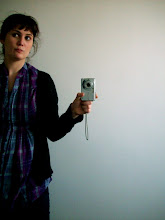One of the things that I find that challenges what we’ve talked about in class is the fact that this book wasn’t written for children, or even about children. Stowe uses children as reasoning behind “Christian slavery”, but children were not the target audience for this book nor are they the main focus. That being said, the children that Stowe does portray have a large impact on the novel, but not in the way that typical children’s literature of the nineteenth century often did. There are several incongruencies between Uncle Tom’s Cabin and common children literature of the time.
For example, according to MacLeod, many children’s literature pieces were filled with children “who were for the most part good but who were possessed of one great fault” (93). In Uncle Tom’s Cabin, it could be argued that The Shelbys were for the most part good, yet their fault would be the fact that they’re slave owners. However, the Shelbys are not the main focus of the novel and the didactic lesson comes from Tom, not the Shelbys. There is also the huge red flag that slavery should be seen as more than just a simple fault incomparable to sneaking into the kitchen for sweets.
Children in this novel don’t get enough ‘page time’ for one to accurately asses their personalities, however, it appears the main fault of Eliza’s baby Harry is that he loves his mother and is acting out selfishly by staying by her side. If we are in fact supposed to go along with the belief that selfishness is wrong, then Harry should run away from his mother and allow himself to be enslaved and treated miserably by Mr. Haley so that at least, he’s not being selfish and thinking of himself first. What kind of a message is that? On the other hand, if he did work for Mr. Haley, it would hurt his mother terribly and children’s literature does mention that we shouldn’t hurt others, for what kind of morality would that be? So where does this leave us? Either way you want to look at Harry’s or his mother’s actions, they’re in the wrong. “To look to one’s own advantage was always suspect in children’s stories” (95) yet for these characters, their ‘advantage’ is their way out of a terrible life not worth living. The audience, who's been trained to look at literature a certain way this whole time, is thrown for a loop. Who’s way of thinking is right, the Children’s literature of the time, or Uncle Tom’s Cabin?

I definitely agree with you in thinking that Stowe purposefully used children to show how she felt that a family staying together was the most important thing. If Eliza had been escaping with a soon to be sold husband instead of a baby, I don't think we would have all been as nervous while reading the scenes of her running and jumping over the icy river!
ReplyDeleteYour first paragraph hit it right on the nose. It concerns me just thinking about the prospect of presenting this book to a child. I think many of the ideas proposed are important for kids to understand, but they are presented in such a way in this novel that it is even difficult for adults to swallow. Good work.
ReplyDeleteI agree that this books primary audience was not children. Even Stowe could image this message to be a bit extreme for a children to handle on their own. However, I had a bit of trouble with your last paragraph. Even if one of the theories we've discussed children are mostly good with one flaw, I don't feel we need to search so desperately for one. I'm not sure we could call Harry selfish for clinging to his mother and not wanting to go with Haley. He's a child...they're selfish in nature but not out of spite.
ReplyDelete